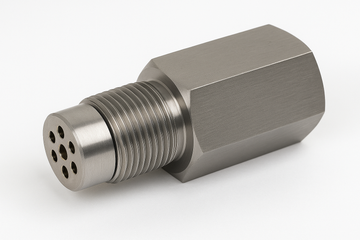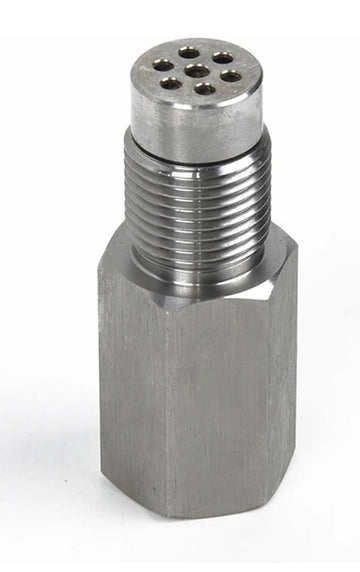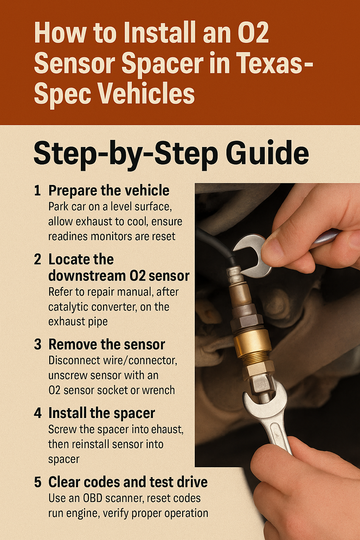Do O2 Sensor Spacers Really Work? Myths vs. Facts
Summary: O2 sensor spacers are a popular solution among car enthusiasts and tuners aiming to manage check engine lights (CELs) after modifying their exhaust systems. But how effective are they really? This guide breaks down the truth behind the myths, how O2 sensor spacers function, and whether they truly help with emissions compliance and engine performance.
Table of Contents:
-
Introduction: Why O2 Sensor Spacers Matter
-
How O2 Sensors Work
-
What Are O2 Sensor Spacers?
-
Myth #1: O2 Sensor Spacers Guarantee No Check Engine Light
-
Myth #2: Spacers Are a Legal Way to Bypass Emissions
-
Myth #3: Spacers Improve Engine Performance
-
The Facts: What O2 Sensor Spacers Actually Do
-
When Do Spacers Work?
-
Installation Best Practices
-
Legal Considerations and Compliance
-
Alternatives to O2 Sensor Spacers
-
Final Thoughts
-
FAQ
1. Introduction: Why O2 Sensor Spacers Matter When upgrading to a high-flow catalytic converter or installing an aftermarket exhaust, you may encounter a persistent CEL due to altered oxygen sensor readings. O2 sensor spacers are often marketed as a fix—but separating fact from fiction is essential for responsible vehicle modification.
2. How O2 Sensors Work Oxygen sensors measure the oxygen content in exhaust gases and relay this data to the ECU (Engine Control Unit). There are typically two types:
-
Upstream (pre-cat): Monitors the air-fuel ratio for combustion control.
-
Downstream (post-cat): Monitors catalytic converter efficiency.
3. What Are O2 Sensor Spacers? An O2 sensor spacer is a small extension that relocates the sensor slightly out of direct exhaust flow. This modification can reduce the sensitivity of downstream readings, potentially preventing false CELs when the catalytic converter efficiency appears too low.
4. Myth #1: O2 Sensor Spacers Guarantee No Check Engine Light Fact: While spacers can help reduce the likelihood of a CEL, they are not a guaranteed fix. Sensor calibration, engine tuning, and vehicle ECU sensitivity all play a role.
5. Myth #2: Spacers Are a Legal Way to Bypass Emissions Fact: In most jurisdictions, tampering with emission systems—including using spacers to manipulate sensor data—is illegal. These are intended for off-road or racing applications unless explicitly approved.
6. Myth #3: Spacers Improve Engine Performance Fact: O2 sensor spacers have no direct impact on horsepower or torque. Their role is limited to sensor signal modification, not power enhancement.
7. The Facts: What O2 Sensor Spacers Actually Do
-
Reduce the chance of a post-cat CEL after exhaust modifications
-
Mimic proper catalytic function to prevent ECU error codes
-
Offer a temporary workaround when tuning isn’t immediately available
8. When Do Spacers Work? Spacers tend to work best in the following scenarios:
-
After installing a high-flow catalytic converter
-
When the post-cat sensor is too sensitive
-
In combination with engine tuning
9. Installation Best Practices
-
Ensure correct thread size and pitch
-
Use anti-seize compound
-
Avoid over-tightening to protect threads
-
Test for leaks after installation
10. Legal Considerations and Compliance Always check your local and federal regulations. The EPA and CARB (California Air Resources Board) do not approve emission system tampering. Spacers are often for off-road use only.
11. Alternatives to O2 Sensor Spacers
-
ECU reprogramming or tuning
-
High-quality, emissions-compliant catalytic converters
-
CEL suppressors with built-in mini catalysts (where legal)
12. Final Thoughts O2 sensor spacers can be a helpful tool in specific modification setups, but they are not a magic fix and must be used with caution. Understanding the myths and facts can help car owners make informed, compliant decisions.
13. FAQ Q: Will an O2 sensor spacer help me pass emissions or a smog test? A: In some cases, yes. O2 sensor spacers can help reduce or eliminate check engine lights caused by high-flow or removed catalytic converters, which may allow a vehicle to pass a visual inspection or readiness check. However, they do not lower actual emissions output, and their legality varies by state.
Q: Are O2 sensor spacers legal? A: In most cases, they are not street-legal and are intended for off-road use.
Q: Can I use a spacer without tuning my ECU? A: You can, but results vary. Tuning may be needed for optimal performance and CEL suppression.
Q: Do I need a spacer on both upstream and downstream sensors? A: Typically, only the downstream (post-cat) sensor is spaced to prevent CELs.


![ Fix P0420 Fast: Do O2 Sensor Spacers Really Work? [Legal Tips Inside]](http://ghalysmotorparts.com/cdn/shop/articles/ChatGPT_Image_Oct_10_2025_10_40_32_AM.png?v=1760118069&width=360)
![Do O2 Sensor Spacers Really Help Clear the P0420 Code? [Expert Guide]](http://ghalysmotorparts.com/cdn/shop/articles/ChatGPT_Image_Oct_9_2025_09_28_33_PM_654c1798-c0d4-428f-a5b6-f20b95661b54.png?v=1760129952&width=360)


